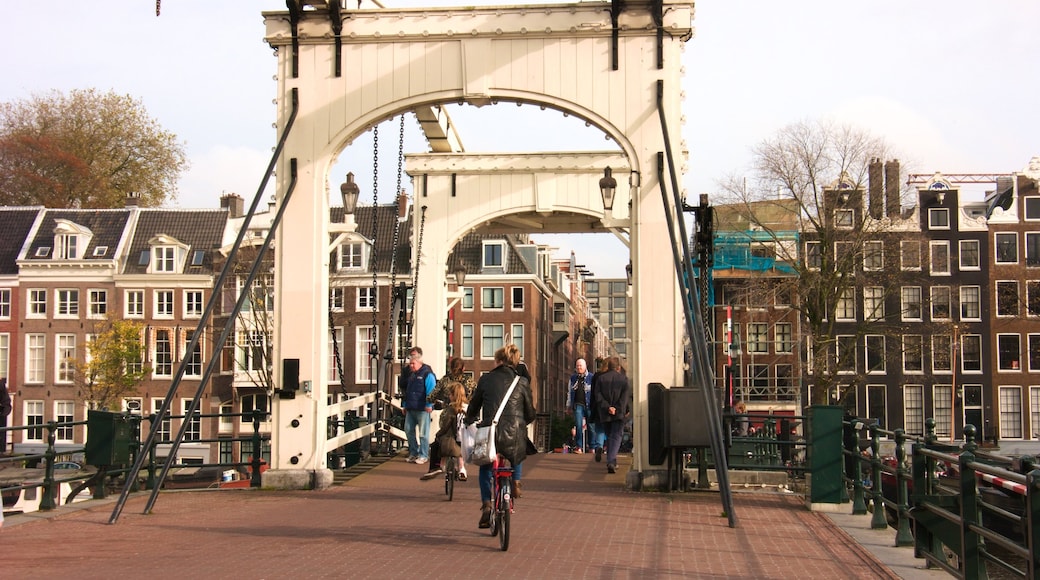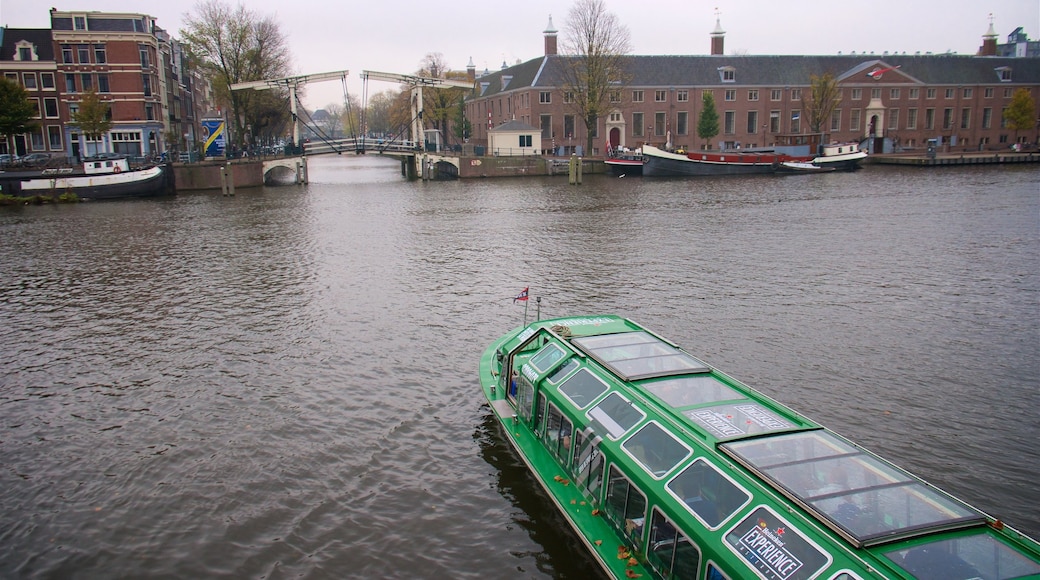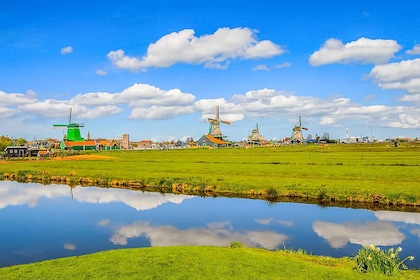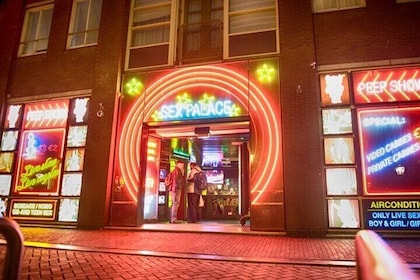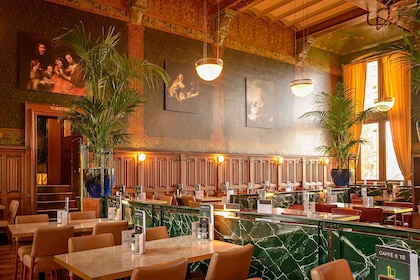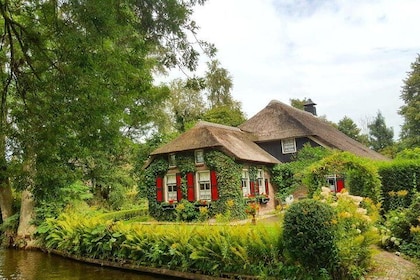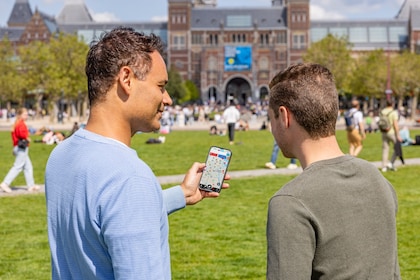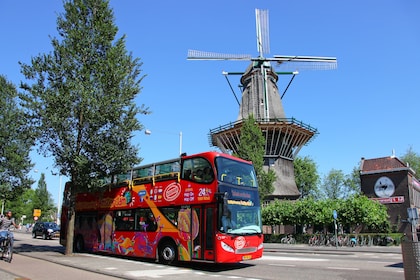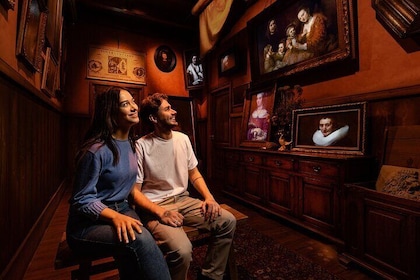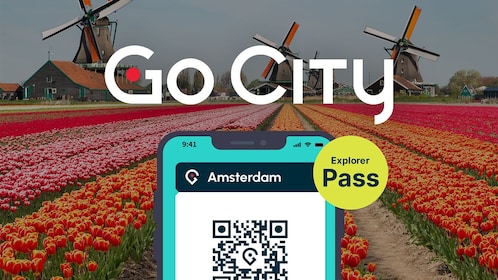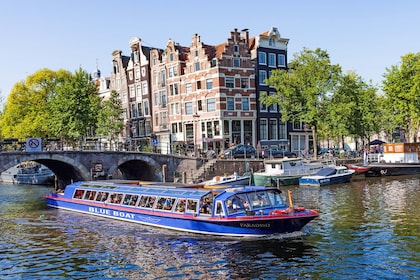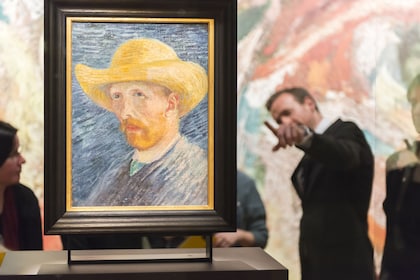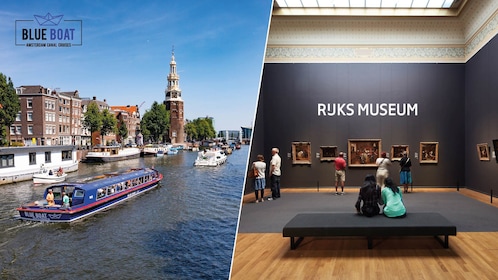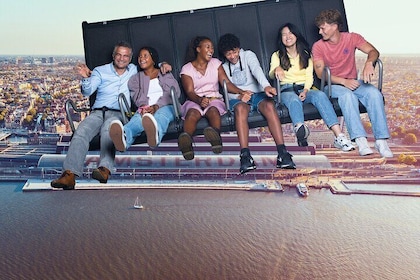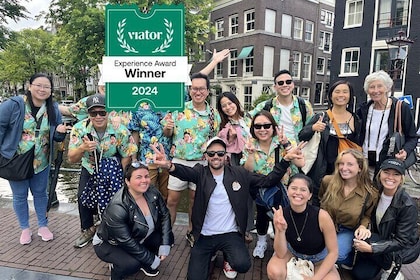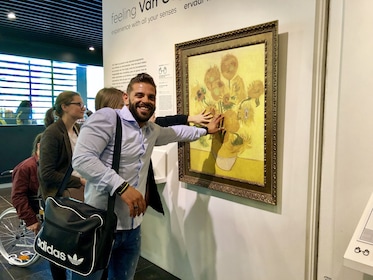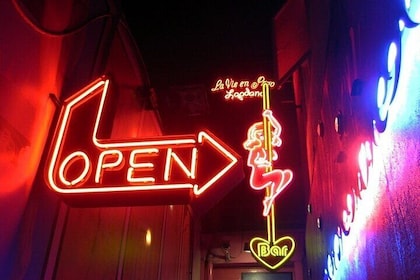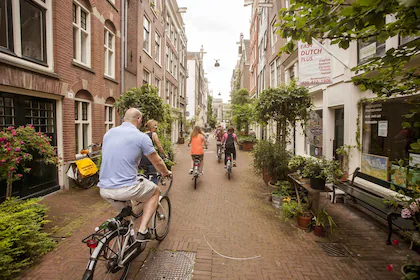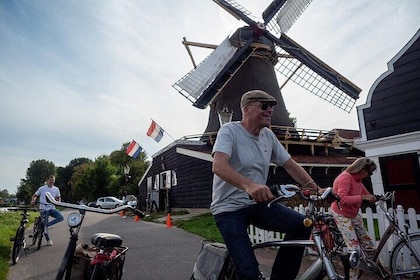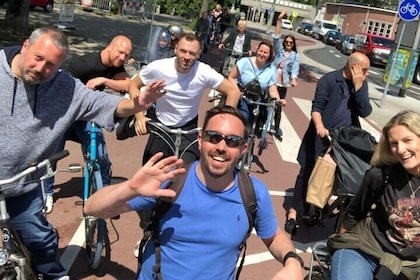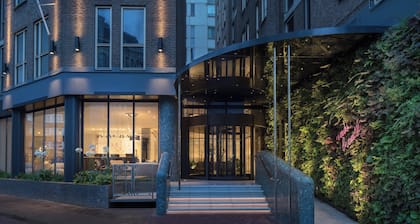The Skinny Bridge (Magere Brug), between the Keizersgracht (Emperor's Canal) and Prinsengracht (Prince’s Canal), straddles the River Amstel. In a city that has more than 1,200 bridges, this narrow bridge stands out because of its timeless beauty and movie fame.
In 2010, the Grachtengordel (Canal Ring) of Amsterdam was declared a UNESCO heritage site and the Skinny Bridge has become an icon for this part of the old city center. Photographers usually love this bridge because it looks very picturesque, especially during “the blue hour” when the sky darkens and the bridge is illuminated by a chain of 1,800 atmospheric lightbulbs.
Like London’s Tower Bridge, this small bascule bridge has a counterweight lifting mechanism that allows tall vessels to pass underneath. Until 1994, the wooden drawbridge was opened manually, by two “brugwachters” (bridgemasters).
“Magere” means “skinny” in Dutch and the original footbridge, dating back to 1691, was so narrow that two people could hardly pass each other. During an Amsterdam walking tour or canal tour, the guide will tell you that the bridge was named after two sisters, who lived on opposite sides of the Amstel. They wanted to visit each other daily, but ran out of money when building the bridge. This legend also features in the James Bond movie Diamonds are Forever.
The bridge you see today was opened in 1934. Back in the 1970s when the movie was shot, cars were still allowed to cross the bridge. These days, the bridge is only open to pedestrians and cyclists, allowing you to explore it at your leisure.
Stand on the painted wooden bridge to take in the nearby neo-renaissance Royal Theatre Carré building and the 17th-century Amstelhof building, which is now the Amsterdam branch of The Hermitage of Saint Petersburg.
Revisit the bridge at night, when its twinkling lights are reflected in the River Amstel. This is best done on a Candlelight Cruiseon a glass-topped canal boat, when you get to pass underneath the bridge.
The Skinny Bridge (Magere Brug) connects the Kerkstraat with the Nieuwe Kerkstraat and can be reached by bike, by public transportation or on foot. The bridge is halfway between the Weesperplein and Waterlooplein metro stops, each a 7-minute walk away.
